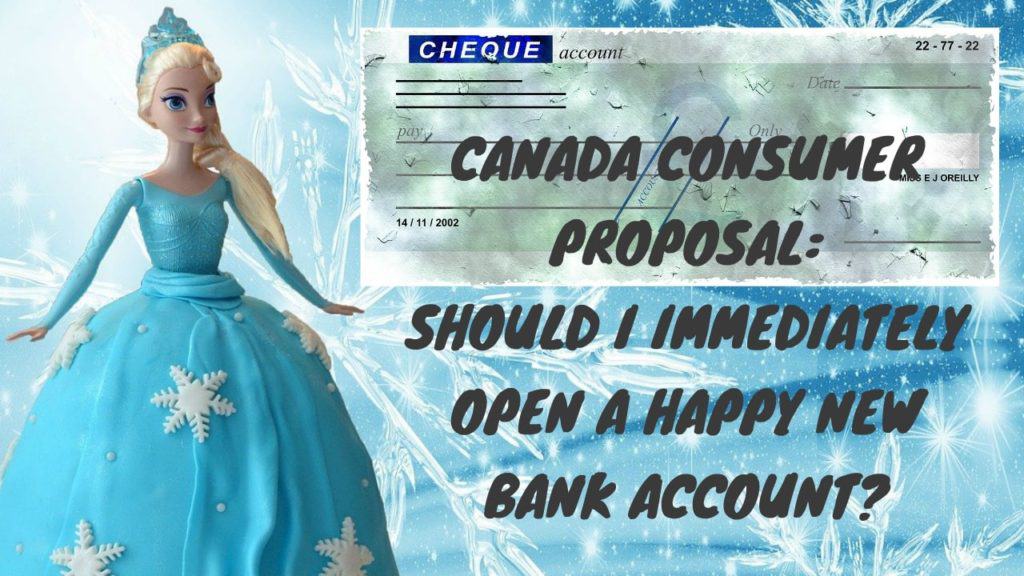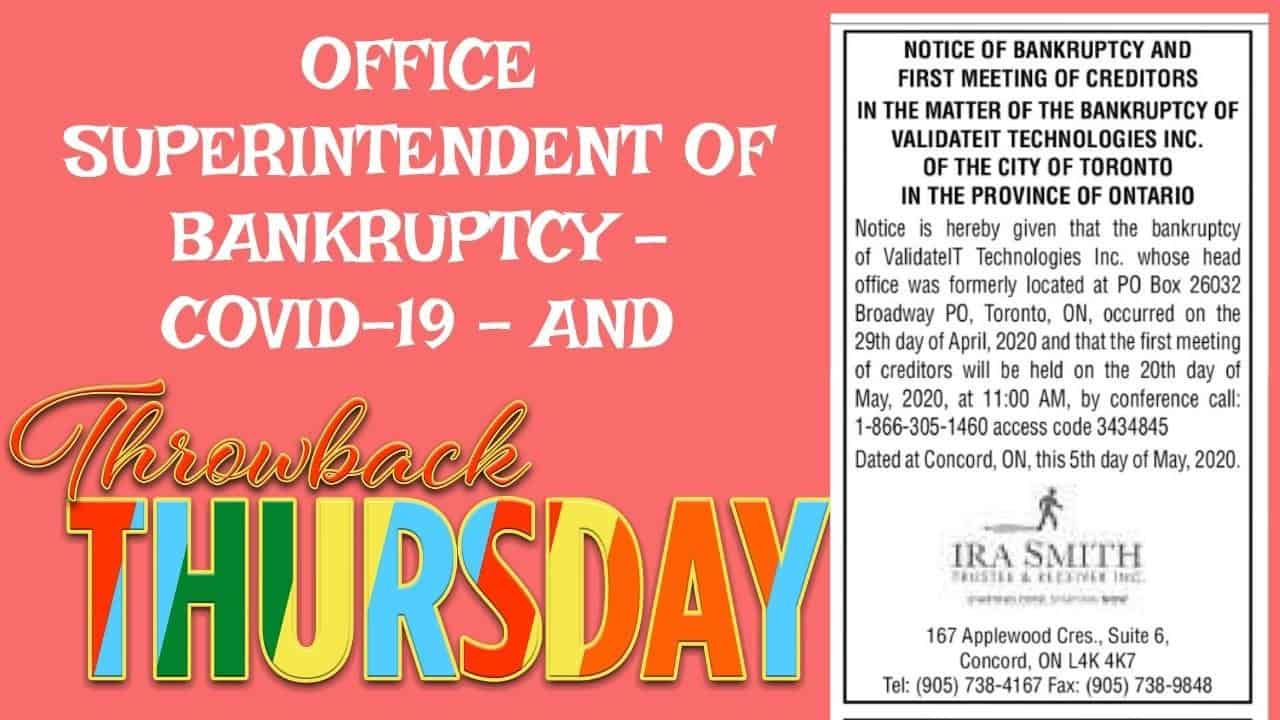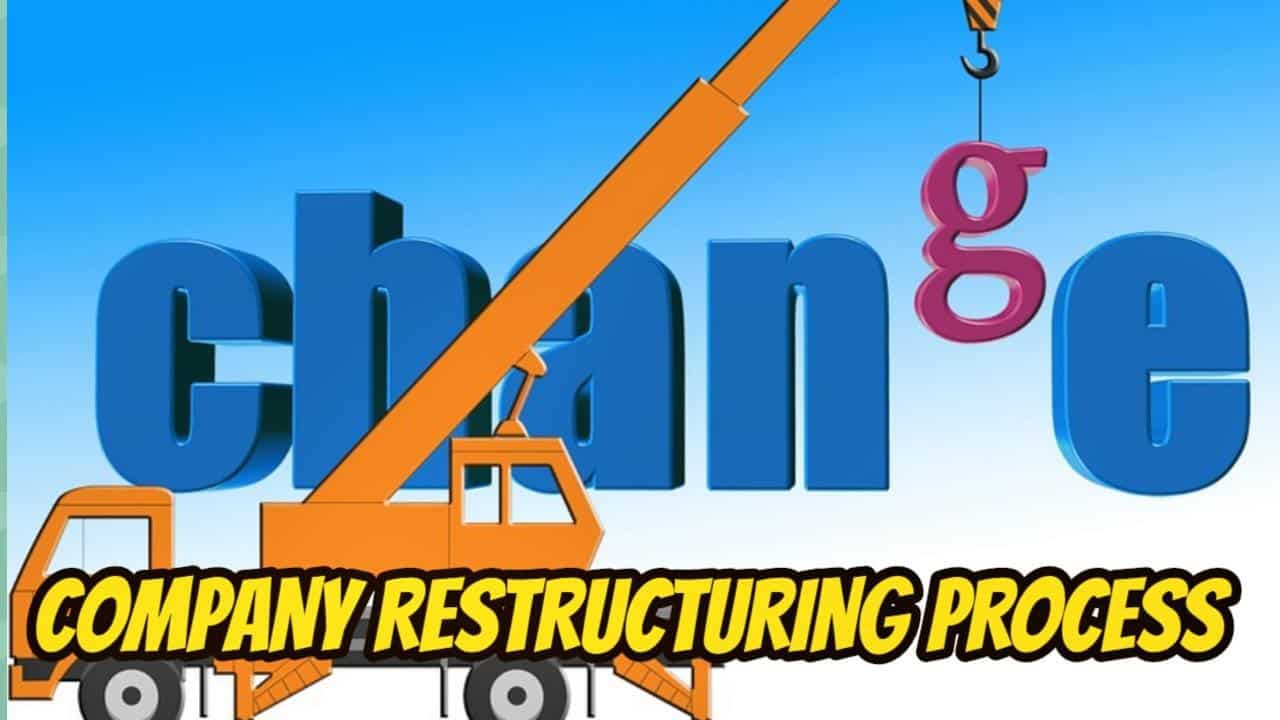The Ira Smith Trustee Team is absolutely operational and Ira, in addition to Brandon Smith, is readily available for a telephone consultation or video meeting. We hope that you and your family are safe and healthy.
If you would prefer to listen to an audio version of this Brandon’s Blog, please scroll to the bottom and click play on the podcast.

Canada consumer proposal: Introduction
Subscribers to Brandon’s Blog know that I have written many blogs on the Canada consumer proposal process. When considering a consumer proposal, the insolvent person will many times ask me can I keep my bank account? That is a good question. But the better question is should I keep my current bank account?
In this Canada consumer proposal Brandon’s Blog, I will explain why.
Canada consumer proposal: A refresher
Before explaining why the bank account question should be the question, let me give a brief refresher of what a Canada consumer proposal is.
A Canada consumer proposal is a proceeding under the Bankruptcy and Insolvency Act (Canada). However, it is different from bankruptcy. Canada consumer proposals are available to people whose overall monetary commitments do not exceed $250,000, not including debts secured against their principal home.
Collaborating with a licensed insolvency trustee (Trustee) acting as the Administrator of the Canada consumer proposal, you make it to:
- Pay your creditors a portion of what you owe them over a particular duration not surpassing 60 months.
- Increase the time you need to work out those financial obligations.
- Or a mix of both.
Payments are made to the Trustee, and the Trustee utilizes that money to pay each of your creditors their pro-rata share. The Canada consumer proposal shall be finished within 5 years from the day of filing. Also, the Canada consumer proposal must give the insolvent person’s creditors a better return than they would get under the person’s bankruptcy.
When is a Canada consumer proposal appropriate?
To figure out if a Canada consumer proposal, or a different option, is the ideal selection for you, set up a meeting with a Trustee to discuss your individual circumstances. The Trustee will evaluate your financial scenario and clarify the advantages and disadvantages of the various choices that are appropriate for your circumstances. If you choose to submit a consumer proposal, the Trustee will deal with you to establish a plan that helps you fully discharge your debts.
What happens when you file a Canada consumer proposal?
The Trustee will file the Canada consumer proposal with the Office of the Superintendent of Bankruptcy (OSB). Once your proposal is filed, you quit paying directly to your unsecured creditors. On top of that, if your creditors are garnisheeing your wages or bank account, or have begun legal action against you, these actions are stopped on the filing of the proposal.
The Trustee submits the Canada consumer proposal to your creditors. The proposal will include a report on your personal scenario as well as the root causes of your economic difficulties.
Creditors then have 45 days to either approve or deny the proposal. They can likewise do this either before or at a meeting of creditors if one needs to be held. A meeting of creditors is held if one is requested by enough unsecured creditors who in total are owed at the very least 25% of the overall value of the proven claims.
A meeting request needs to be made by the creditors within 45 days of the declaration of the proposal. The OSB can request the Trustee to call a meeting of creditors any time within that very same period.
The meeting of creditors needs to be held within 21 days after being called. At the meeting, the creditors vote to either approve or refuse the proposal. If no meeting of creditors is asked for within the 45 days of the filing of the Canada consumer proposal, the proposal will be considered to have been accepted by the creditors regardless of any objections received by the Trustee.

Keeping your bank account and other assets in a Canada consumer proposal
A Canada consumer proposal is an approach that is frequently utilized as an option to bankruptcy. It provides several benefits. A consumer proposal permits you to:
- Pay an amount of cash every month you can afford to fully extinguish your debts based on your budget.
- Pay back just a portion of your debts but get rid of them all.
- Pay off your financial debts on an interest-free basis over 60 months (or less if you wish).
- Keep all your assets that you can afford to keep.
The ability to keep your assets is the main feature that distinguishes a Canada consumer proposal from bankruptcy.
Canada Consumer Proposal: Who can freeze your bank account in Canada?
Having a frozen bank account is definitely discouraging as well as stressful. Freezing up an account is a tool that is frequently used to get your attention by those you owe money to. This is specifically true if various other methods of getting you to react and get a payment plan into place have actually not worked yet.
When your bank accounts are frozen, you are incapable to utilize the cash you have or move money from one of your accounts to another. As well, when your account is frozen, your bank will not honour any cheques written on the account when they hit your bank for clearing. This is regardless of whether the cheques were written before or after the account freeze. Frozen means frozen!
As a result of the stress and anxiety that a frozen bank account can place on your finances and life, it is necessary to understand who can freeze your account, why somebody might freeze your account, and also how you can get your account unfrozen.
Normally, only parties that you owe money to have the opportunity to freeze your bank account. Canada Revenue Agency (CRA) and the bank where your account is maintained, have more power over you when it concerns recovering debts via freezing accounts as opposed to unsecured creditors.
There are three generally three groups of financial institutions that could potentially freeze your account if you owe them money:
- CRA – If you owe money to CRA and do not either pay off their demand or enter into a payment plan, they can freeze your bank account. They can issue a third party demand to your bank to freeze all accounts that you maintain with that bank. The bank will collect all available funds and send it to CRA while maintaining the freeze until CRA tells them they are fully repaid and the freeze can be lifted. CRA has significant powers that they can use without too much delay.
- The bank where your accounts are – If you owe money to the bank where your accounts are, then your bank can freeze your accounts. It is a standard term of all credit card and loan documents that if you owe the bank money and are in breach of your credit card or loan agreements, the bank has the right to offset any positive cash balances on deposit with the bank against your debts to the same bank. So it is easy for your bank to turn your account to frozen and take your money.
- Execution creditors – An unsecured creditor to who you owe money, can go to court and sue you for the amount owing. If you do not defend, or you defend but lose in court, the creditor then holds a judgment against you. They are now an execution creditor. They can then examine you to understand what assets you own and where they are located, including your bank accounts. The execution creditor can then file a request with the Sheriff to create your frozen bank account and garnishee your bank accounts.
These are the creditors that can freeze your bank accounts.
Why you should move your bank accounts before filing a Canada consumer proposal or a Canada bankruptcy
Why should you move your banker account before filing a Canada consumer proposal or a Canada bankruptcy? The reason is simple. You do not want an accident to happen where a creditor is able to withdraw funds from your accounts after you have filed. There is a stay of proceedings once you file your proposal or for bankruptcy. However, mistakes happen and sometimes funds can leak out of your accounts.
How can this happen? I will explain it. Many of us provide one or more vendors that provide goods or services to us with a pre-authorized debit (PAD) arrangement so that they can remove from our account automatically the monthly payment we owe them.
When you file a Canada consumer proposal, any vendor who is fully paid is not a creditor of yours. You may not wish to continue with the service and you may very well be in a long-term contract. So, you would want to cancel the service just before filing. But if you don’t cancel the PAD, the supplier may make a mistake, or not, and continue to pull funds from your account until you cancel the PAD. To avoid this error, it is best to move your bank account before filing so that there are no further funds to withdraw.
The same is true if you owe money to the bank where your accounts are. As soon as your bank gets notice of your Canada consumer proposal filing, they may try to offset the funds in your accounts against what you owe them. This will wreck your budget immediately because you were relying on those funds to pay your necessary monthly expenses and your first proposal payment. So to avoid that calamity, you need to set up new accounts at a bank you don’t owe any money to before filing.
I always advise people to move the accounts when they are contemplating filing. Do it in advance. That planning is important because they may have funds being deposited automatically into their account. Think of your wages, salary or any government amounts deposited into your account. You need time to advise them of your new account that you want your money deposited into. You need the time to make sure that it is being done correctly.
Finally, there are now many online banking choices that offer no-fee accounts and free cheque printing. You can manage everything online, including setting up the account in the first place. These are great choices for people who need to be watching every dollar.
Canada consumer proposal summary
I hope you have enjoyed this Canada consumer proposal Brandon’s Blog. Hopefully, you have better insight now into why anyone thinking about an insolvency filing should set up new bank accounts.
Do you or your company have too much debt? Are you or your company in need of financial restructuring? The financial restructuring process is complex. The Ira Smith Team understands how to do a complex restructuring. However, more importantly, we understand the needs of the entrepreneur or the person who has too much personal debt.
You are worried because you are facing significant financial challenges. It is not your fault that you are in this situation. You have been only shown the old ways that do not work anymore. The Ira Smith Team uses new modern ways to get you out of your debt troubles while avoiding bankruptcy. We can get you debt relief freedom.
The stress placed upon you is huge. We understand your pain points. We look at your entire situation and devise a strategy that is as unique as you and your problems; financial and emotional. The way we take the load off of your shoulders and devise a debt settlement plan, we know that we can help you.
We know that people facing financial problems need realistic lifeline. There is no “one solution fits all” approach with the Ira Smith Team.
That is why we can develop a restructuring process as unique as the financial problems and pain you are facing. If any of this sounds familiar to you and you are serious in finding a solution, contact the Ira Smith Trustee & Receiver Inc. team today.
Call us now for a free consultation.
We will get you or your company back on the road to healthy stress-free operations and recover from the pain points in your life, Starting Over, Starting Now.
The Ira Smith Trustee Team is absolutely operational and Ira, in addition to Brandon Smith, is readily available for a telephone consultation or video meeting. We hope that you and your family are safe and healthy.





